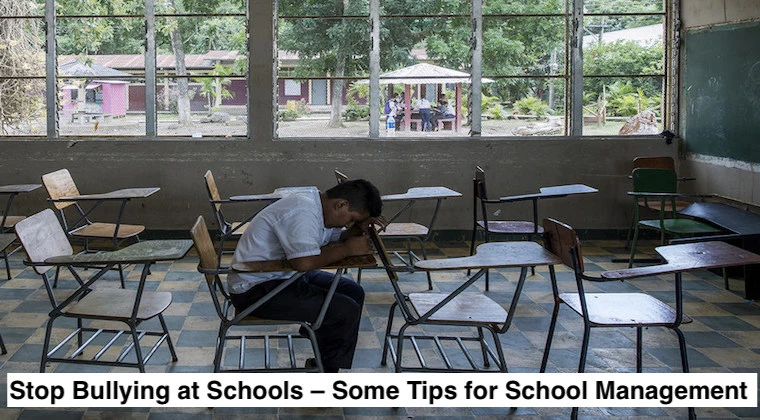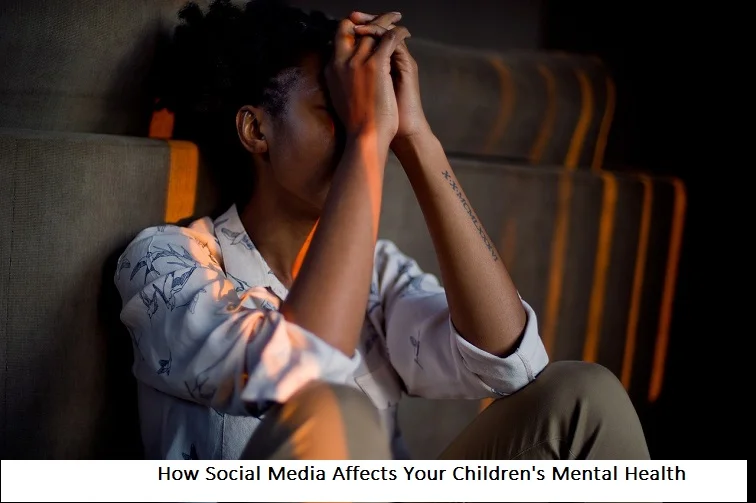+1 845 259 2974 (11 a.m to 7 p.m CST)
Stop Bullying at Schools – Some Tips for School Management

Bullying in schools is a serious issue that affects students' well-being and academic performance. It involves repeated aggressive behavior that can be physical, verbal, or digital. Victims of bullying often experience anxiety, depression, and a decline in school performance. Addressing bullying is crucial to creating a safe and supportive learning environment.
Schools must take proactive steps to prevent bullying, and monitoring is one effective strategy. Monitoring can include the use of CCTV cameras, tracking online activity, and staff vigilance. These methods help identify bullying incidents early and allow for timely intervention. By implementing monitoring systems, schools can deter bullying behavior and ensure that students feel safe and protected. This approach not only helps in stopping bullying but also promotes a culture of respect and kindness within the school community.
Bullying – Types and Affects
Bullying is a serious issue that affects many students in schools. It involves a pattern of aggressive behavior that is meant to cause harm or fear.
- Repeated aggressive behavior over time
- Intentional acts designed to harm or intimidate
- Targets individuals who are perceived as vulnerable or weaker
Types of Bullying
Bullying can take several forms, each with unique characteristics and impacts. Understanding the different types can help in identifying and addressing them effectively.
Physical Bullying:
It involves hitting, kicking, pushing, or other physical assaults. It can include damaging someone’s belongings and is often more visible and easier to detect
Verbal Bullying:
It Includes name-calling, insults, and verbal threats. It can also involve making racist, sexist, or homophobic remarks. It often leaves emotional scars that can last a long time
Cyberbullying:
It occurs online or through digital devices. It involves sending harmful messages, social media posts, or spreading rumors. It can happen 24/7 and reach a wide audience quickly
Impact of Bullying on Students
The effects of bullying on students are profound and can impact various aspects of their lives. It is essential to recognize these impacts to provide proper support.
Mental Health:
Victims often suffer from anxiety, depression, and low self-esteem. It can lead to feelings of helplessness and worthlessness. It may cause long-term psychological issues
Physical Health:
Bullying can cause physical symptoms like headaches and stomachaches. Stress-related issues can also arise, such as sleep disturbances. In severe cases, physical injuries from bullying can occur
Academic Performance:
Bullying often leads to difficulty concentrating in class. Victims may have declining grades due to stress and absenteeism. Fear of bullying can cause students to avoid school altogether
Social Impact:
Victims may experience isolation from peers and difficulty forming friendships. It can lead to social anxiety and a lack of trust in others. The stigma of being bullied can affect relationships with family and friends
Severe Consequences:
In extreme cases, bullying can lead to self-harm or suicidal thoughts. Long-term effects can include chronic mental health issues and difficulty in adult relationships
Understanding and addressing these impacts is crucial to ensure the well-being and success of students.
The Role of Monitoring in Schools
Monitoring in schools involves using various tools and methods to observe and track student behavior to prevent bullying. Methods include:
- CCTV: Cameras placed around the school to monitor physical space.
- Online Activity Tracking: Software to monitor students’ online activities and detect cyberbullying.
- Staff Vigilance: Training teachers and staff to recognize and intervene in bullying incidents.
Benefits of monitoring include creating a safer environment, quickly identifying and addressing bullying, and providing evidence for disciplinary actions. It helps protect students and supports staff in maintaining a positive and secure school atmosphere.
Implementing Monitoring Systems
Setting up a comprehensive monitoring system is crucial for effective bullying prevention. The process involves several strategic steps to ensure thorough coverage and functionality.
Assessment:
Evaluate the school's current bullying issues to understand the specific needs. Identify areas that need monitoring, such as hallways, classrooms, and playgrounds. Determine the types of bullying that are most prevalent.
Planning:
Choose appropriate monitoring tools, such as CCTV cameras and online activity tracking software. Develop a clear implementation plan outlining the locations for cameras and software deployment. Ensure the plan aligns with the school's budget and technical capabilities.
Installation:
Set up cameras and monitoring software according to the plan. Ensure all equipment is properly installed and tested to function correctly. Conduct a trial run to check the system's effectiveness and make necessary adjustments.
Training Staff and Students on Monitoring Practices
Proper training is essential for the effectiveness of the monitoring system. Both staff and students need to understand the system’s purpose and how to use it.
Staff Training:
- Educate staff on using monitoring tools and recognizing signs of bullying.
- Provide guidelines on how to intervene and report incidents effectively.
- Conduct regular training sessions to keep staff updated on best practices.
Student Awareness:
- Inform students about the monitoring system and its benefits.
- Explain how monitoring helps create a safer and more supportive school environment.
- Encourage students to report any bullying incidents they witness, fostering a culture of openness and support.
Ensuring Privacy and Ethical Considerations
Balancing the need for monitoring with privacy and ethical concerns is crucial. Schools must implement monitoring in a way that respects students' and staff’s rights.
Privacy Policies:
- Develop clear policies on how monitoring data will be used and stored.
- Ensure only authorized personnel can access and review monitoring data.
- Regularly review and update privacy policies to adapt to new challenges and technologies.
Ethical Practices:
- Use monitoring solely for preventing and addressing bullying, avoiding misuse of data.
- Implement strict guidelines to maintain ethical standards in monitoring practices.
- Educate staff and students about ethical use of monitoring systems.
Transparency:
- Communicate openly with parents, students, and staff about monitoring practices and policies.
- Address any concerns promptly and thoroughly to build trust and ensure community support.
- Provide regular updates on the effectiveness of the monitoring system and any changes made.
Effectiveness of Monitoring in Preventing Bullying
Monitoring systems have proven effective in various schools. For example, one school reported a 40% reduction in bullying incidents after installing CCTV cameras and monitoring software. Case studies show that schools using comprehensive monitoring saw significant improvements in student safety.
Statistics reveal that schools with active monitoring report fewer bullying cases. For instance, a school district in New York saw a 35% decrease in bullying within a year of implementing monitoring systems. Feedback from students, parents, and teachers has been positive, highlighting increased feelings of safety and a more supportive environment.
Challenges and Limitations
Monitoring systems can have drawbacks. They may invade privacy and create a sense of constant surveillance, making students uncomfortable. There are also concerns about data security and misuse.
To address these concerns, schools should communicate clearly with students and parents about the monitoring’s purpose and benefits. Implementing strict privacy policies and ensuring data is secure can help alleviate worries.
Balancing monitoring with other anti-bullying strategies is essential. Schools should also focus on education, counseling, and fostering a positive school culture to create a comprehensive approach to bullying prevention.
Bullying in schools is a significant issue that affects students' well-being and academic performance. Implementing monitoring systems, such as CCTV, online activity tracking, and staff vigilance, can effectively prevent and address bullying incidents. These systems help create a safer environment, allowing for quick intervention and evidence collection.
However, it is essential to balance monitoring with privacy and ethical considerations. Clear communication, proper training, and a comprehensive approach that includes education and counseling are crucial. By adopting these strategies, schools can ensure a supportive and respectful environment where all students can thrive.























